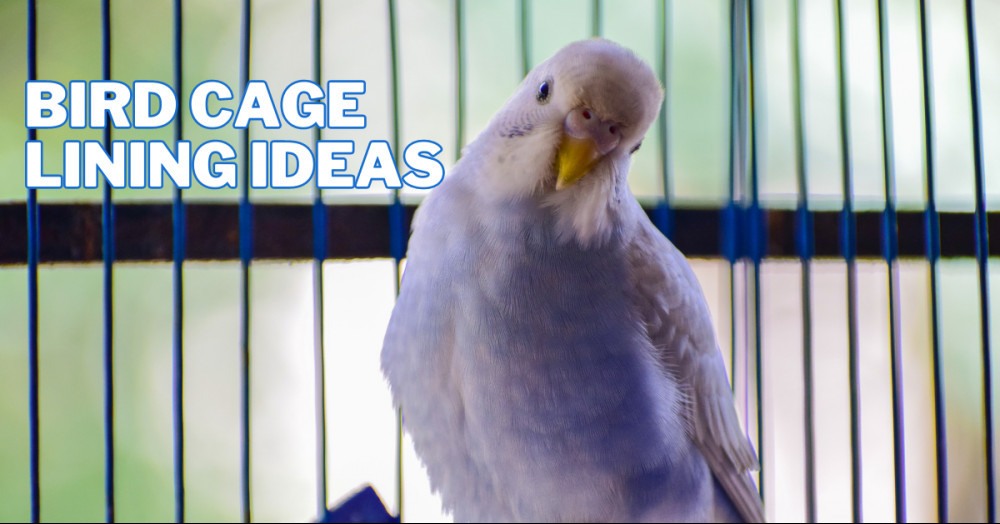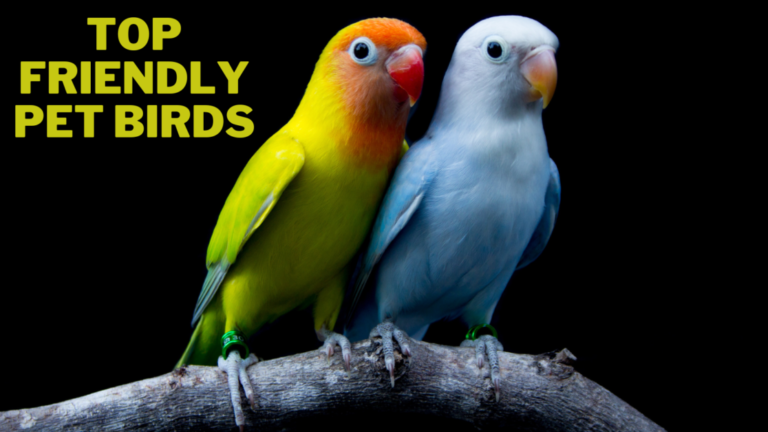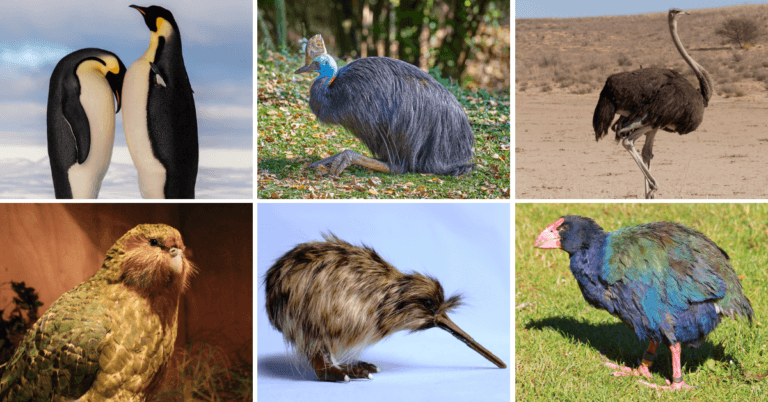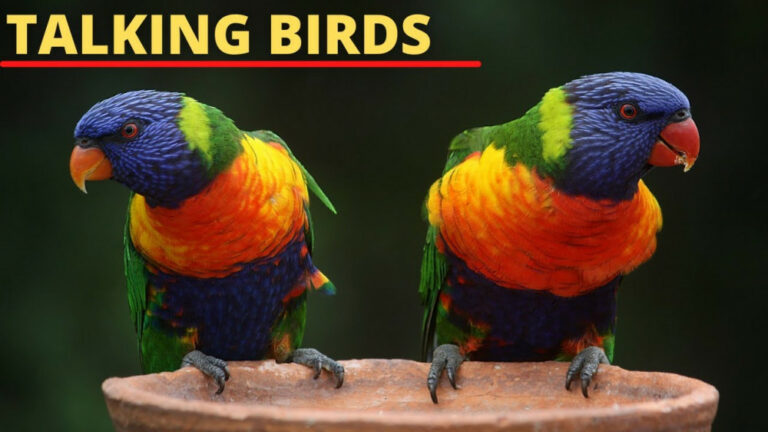Best Bird Cage Lining Ideas
Best Bird Cage Lining Ideas
It is crucial to provide a cozy and secure living space for your pet bird for its welfare. One important aspect of bird cage setup is choosing the right lining material.
The lining serves multiple purposes, including providing a comfortable surface for your bird to walk on, absorbing waste, and simplifying cage cleaning.
With many options available, it is important to select a suitable lining material that prioritizes your bird's health and hygiene.
This blog post will examine numerous options for bird cage lining to help you make a decision that will fulfill the demands of your feathered companion.
From traditional choices like newspaper and cage liners to natural materials and specialized cage pads, we will cover a range of options to help you create a comfortable and clean living space for your beloved bird companion.
The Importance Of Bird Cage Lining
Birdcage lining is crucial in maintaining pet birds' health, comfort, and hygiene. Birds spend a significant amount of time at the bottom of their cages, so it is crucial that the bird cages are lined.
The lining material provides a comfortable surface for them to walk, perch, and rest. It should be soft, non-slip, and gentle on their feet, ensuring they can move around without discomfort or injuries.
Birdcage lining helps absorb and contain waste, such as droppings and spilled food. It prevents waste from accumulating at the bottom of the cage, making cleaning easier and more efficient.
Absorbing debris also helps reduce odours and maintains a cleaner environment for the bird and the owner.
Proper birdcage lining contributes to maintaining a hygienic environment. It prevents direct contact between the bird and its droppings, which can harbour bacteria, parasites, and other pathogens.
By reducing the risk of contamination, a clean and hygienic cage promotes the bird's overall health and reduces the likelihood of illnesses or infections. Birdcage lining simplifies cleaning. It contains waste, making it easier to remove and dispose of.
Depending on the lining material chosen, it can be quickly replaced with fresh lining or easily cleaned, ensuring a consistently clean and sanitary living space for the bird.
Some bird cage linings, such as cage pads or specialized grate systems, provide a protective layer between the bird's feet and the rigid cage bottom.
This helps prevent foot injuries, discomfort, or soreness from direct contact with the cage bars or grates.
The choice of bird cage liner allows customization based on the particular requirements of the bird species or individual bird.
Different lining materials provide varying degrees of absorbency, softness, and traction to accommodate the bird's preferences and needs.
By choosing the right bird cage lining and maintaining it regularly, bird owners can create a cozy, hygienic, and secure environment that fosters their feathered friends' well-being and happiness.
Bird Cage Lining Ideas
Choosing the right bird cage lining is essential when creating a comfortable and hygienic living space for your pet bird. A suitable lining material provides a comfortable walking surface, helps with waste absorption, and simplifies cleaning.
When lining a bird cage, it's important to prioritize the safety and comfort of your feathered friend. Here are some birdcage lining ideas to consider:
1. Newspaper
Newspaper is a popular choice for bird cage lining due to its affordability and accessibility. It provides a smooth and easy-to-clean surface for the bird to walk on.
Using plain, unprinted newspapers is essential as some inks or chemicals used in printed newspapers can be toxic to birds.
Layering newspaper at the bottom of the cage effectively absorbs droppings and spills, making it easier to clean and maintain hygiene.
Regularly replacing the newspaper lining is crucial to prevent the buildup of waste and odours. Additionally, cutting newspaper to fit the cage size allows for customization and efficient use of the material.
However, monitoring the bird's behaviour and ensuring that they do not chew or ingest the newspaper are crucial, as this could pose a health risk.
2. Bird Cage Liners
Cage liners are a convenient and practical option for lining bird cages. These commercially available liners are designed to fit different cage sizes and shapes.
They are often made of paper, fabric, or synthetic fibres, which offer durability and absorbency. The liners are typically pre-cut, eliminating the need for measuring and cutting. They provide a smooth and comfortable surface for your bird to walk on, reducing the risk of foot or leg injuries.
Cage liners are absorbent, effectively trapping droppings and spills, making cleaning a breeze. Depending on the material, some liners can be easily wiped clean, while others are disposable and can be replaced entirely.
The availability of different styles and designs allows you to choose a liner that serves its purpose and adds aesthetic appeal to the birdcage.
It's essential to regularly monitor the liner's condition and replace it as needed to maintain cleanliness and hygiene for your bird.
3. Cage Paper
Cage paper is a specialized type of paper designed explicitly for bird cages. As a lining material, it offers several advantages over regular newspapers. One key benefit is its thickness and durability.
Cage paper is typically thicker and more robust than regular newspaper, providing a sturdier and more comfortable surface for your bird to walk on.
This can help prevent foot or leg injuries and promote a more natural and secure perching experience.
Cage paper is often designed to be more resistant to tearing and shredding, ensuring that it remains intact and functional for longer.
It also provides a smooth and clean appearance in the bird cage, enhancing the overall aesthetics. Like newspapers, cage paper is easy to replace and dispose of, making cage maintenance more convenient.
Regularly monitor the condition of the cage paper and return it when it becomes soiled or damaged to maintain a clean and comfortable environment for your feathered friend.
4. Cage Pads
Cage pads are a cozy and comfortable option for bird cage lining. These soft, cushioned mats or pads are designed to provide a comfortable surface for your bird to rest and walk on.
They are typically made of materials such as fleece or cotton, which are soft and gentle on your bird's feet. The pads' cushioning effect helps reduce the pressure on your bird's joints and feet, promoting overall comfort and well-being.
Cage pads also offer a non-slip surface, ensuring your bird can move around the cage with stability and confidence. They can be easily placed on the cage floor and removed for cleaning or washing.
This makes maintenance hassle-free, as you can regularly clean the cage pads to ensure a hygienic living environment for your bird.
Choosing cage pads that are machine washable and made from bird-safe materials is important. Regularly inspect the condition of the cage pads and replace them if worn out or damaged. With cage pads, you can provide your bird with a cozy and comfortable space to relax and play in their cage.
5. Natural Materials
Using raw materials as cage lining can provide bird owners with a more rustic and environmentally friendly option. Untreated wood shavings and shredded paper are commonly chosen as natural cage linings.
Wood shavings, such as those made from pine or aspen, can create a soft and comfortable surface for your bird to perch on. They can also help absorb moisture and control odours in the cage.
However, it is important to avoid using wood shavings from cedar or other aromatic woods, as the natural oils and scents can harm birds. Shredded paper, such as plain white or non-toxic inked paper, can also be used as cage lining.
It provides a soft and disposable option that is easy to replace and maintain. When using natural materials as cage lining, it's crucial to ensure they are free from chemicals or toxins.
Avoid using materials treated with pesticides, dyes, or other harmful substances, as these can risk your bird's health.
Regularly monitor the condition of the natural cage lining and replace it when it becomes soiled or damp to maintain a clean and hygienic environment for your bird.
6. Cage Grates
Cage grates, or wire mesh floors, are a convenient option for bird cage lining, as they allow waste to fall through, keeping the bird away from their droppings.
The great design promotes cleanliness by preventing birds from directly contacting their waste. The droppings can easily fall through the gaps in the grate, making it easier to maintain a clean cage.
However, it's essential to consider your bird's comfort when using cage grates. Standing on a grate for extended periods can be uncomfortable for birds, as it can put pressure on their feet and joints.
Providing additional perches or platforms in the cage is important to address this.
These perches or platforms should be placed above or alongside the grate, allowing your bird to rest or move to a more comfortable surface.
By offering different levels and characters in the cage, you allow your bird to exercise and relieve any discomfort caused by prolonged standing on the grate.
Regularly inspect the condition of the grate, ensuring that it is sturdy and secure. Clean the grate regularly to prevent the accumulation of droppings and debris.
Observe your bird's behaviour and adjust the cage setup to ensure its comfort and well-being.
7. Cage Liner Sheets
Cage liner sheets are convenient for lining bird cages. These sheets are designed for bird cages and are made of disposable, waterproof materials that are easy to clean and replace.
They are often pre-cut to fit standard cage sizes, making installation quick and hassle-free. Cage liner sheets are highly absorbent, helping to contain and control any messes or spills in the cage.
They can be easily removed and replaced during routine cleaning, saving time and effort.
Additionally, the waterproof material helps prevent liquids from seeping through to the bottom of the cage, keeping the cage and the surrounding area clean and dry.
Overall, cage liner sheets provide a hygienic and convenient solution for maintaining a clean and comfortable environment for your bird.
8. Cage Mats
Cage mats are a practical and comfortable option for lining bird cages. These mats are designed to provide a soft and cushioned surface for your bird to stand on, offering them a comfortable and secure footing.
They are typically made of materials like rubber or foam, which are durable and easy to clean. Cage mats can be easily removed from the cage and cleaned using mild soap and water or disinfectant spray.
The soft and non-slip surface of the mat helps prevent foot injuries and provides a more natural and comfortable environment for your bird.
Cage mats can also help absorb and reduce noise caused by your bird's movements, creating a quieter living space for you and your feathered friend.
With their easy maintenance and added comfort, cage mats are a popular choice for bird owners looking to enhance the well-being of their birds while simplifying the cleaning process.
9. Corn Cob Bedding
Corn cob bedding is a natural and environmentally friendly option for lining bird cages. This bedding material is made from ground corn cobs and provides a soft and comfortable surface for your bird to walk on.
It is absorbent and helps to absorb moisture and control odours in the cage. The natural absorbency of corn cob bedding can help maintain a clean and dry environment for your bird.
When using corn cob bedding, it's important to ensure it is specifically designed for use with birds and does not contain harmful additives or dust.
Choose high-quality corn cob bedding free from chemicals and pesticides, as these can harm your bird's health. Regular cleaning and maintenance are necessary to keep the cage clean and prevent mould or bacteria growth.
Using corn cob bedding, you can provide your bird with a soft and natural substrate while promoting a healthy and comfortable living environment.
10. Cage Liner Rolls
Cage liner rolls are a practical and versatile option for lining bird cages. They come in continuous rolls of liner material that can be easily cut to the desired size to fit your birdcage perfectly.
These rolls are commonly made from materials such as paper or synthetic fibres, offering durability and ease of use. Installing the liner is straightforward – unroll it and trim it to the appropriate dimensions for your cage.
The liner rolls provide a smooth and clean surface for your bird to walk on while also helping to contain any messes and waste.
One of the main advantages of cage liner rolls is their convenience in terms of installation and removal. When the liner becomes soiled or needs to be changed, you can lift it out of the cage and replace it with a fresh piece from the roll.
This makes cleaning the cage a quick and effortless process. Additionally, the liner rolls can be easily stored and accessed whenever needed.
Choosing a high-quality liner material that is safe for your bird and easy to clean is important. Regularly monitor the liner's condition and replace it to maintain a clean and hygienic environment for your feathered friend.
11. Cage Liner Trays
Cage liner trays are a convenient and efficient option for bird cage lining. These trays are specially designed to fit at the bottom of the cage, providing a secure and stable base for the lining material.
Many bird cages have removable trays or pans to hold the cage lining. The trays are typically made of durable and easy-to-clean materials such as plastic or metal.
One of the key benefits of cage liner trays is their ease of cleaning and maintenance.
When cleaning or replacing the lining, you can remove the tray from the cage, eliminating the need to disturb your bird or dismantle the entire cage. This allows for quick and hassle-free cleaning, as you can discard or clean the liner separately.
Additionally, the tray serves as a barrier, preventing any waste or debris from falling outside the cage and keeping the surrounding area clean.
Cage liner trays are a practical choice for bird owners who value convenience and efficiency in maintaining a clean and hygienic bird cage.
It's important to regularly monitor the condition of the tray and the lining material, ensuring that they are in good condition and providing a comfortable environment for your feathered companion.
12. Hemp Bedding
Hemp bedding is gaining popularity as a natural and eco-friendly option for bird cage lining. It is made from the fibres of the hemp plant, which are processed into a soft and fluffy bedding material.
Hemp bedding offers several benefits for both birds and their owners. Firstly, it provides a comfortable surface for birds to walk on and perch.
The soft texture of hemp bedding mimics natural substrates in the wild, promoting natural behaviours and foot health.
Additionally, hemp bedding is highly absorbent, effectively controlling moisture and odours in the cage. This helps create a cleaner and more hygienic environment for your bird.
Hemp bedding is also considered environmentally friendly because it is a renewable resource and can be composted after use.
It is vital to choose hemp bedding designed specifically for bird cages, which does not contain additives or chemicals that may harm your bird.
Regular cleaning and replacing the hemp bedding will ensure a healthy and comfortable living space for your feathered friend.
Conclusion
In conclusion, choosing the proper lining for your bird cage is essential for creating a comfortable and clean environment for your feathered companion.
There are various options available, each with its benefits. Whether you opt for
- Newspaper
- Cage liners
- Cage paper
- Cage pads
- Natural materials
- Cage grates
- Cage liner sheets
- Cage mats
- Corn cob bedding
- Cage liner rolls, or
- Cage liner trays
When selecting, consider safety, comfort, ease of cleaning, and bird preferences.
Regular monitoring and maintenance of the cage lining, including cleaning and replacement as needed, will ensure your bird's healthy and enjoyable living space.
Remember to prioritize non-toxic, absorbent materials and provide a suitable surface for your bird's feet. Choosing the proper lining and maintaining a clean cage can improve your bird's well-being and happiness.
I trust you enjoyed this article on the Best Bird Cage Lining Ideas. Please stay tuned for more blog posts shortly. Take care!
JeannetteZ
Your Opinion Is Important To Me
Do you have thoughts, ideas, or questions? I would love to hear from you. Please leave your questions, experiences, and remarks about the Best Bird Cage Lining Ideas article in the comments below. You can also email me at Jeannette@Close-To-Nature.org.
Disclosure
This post may contain affiliate links. As an Amazon Associate and other affiliate programs, I earn from qualifying purchases at no extra cost to you. Please read my full affiliate disclosure.
You might also enjoy these blog posts:
Best Ways To Fight The Aging Process
Best Tips To Reduce Chronic Pain Without Medication
Best Tips For Managing Anxiety Before Surgery
Interesting Wildlife Species: Unravel The Secrets Of The Animal Kingdom
Best Ways Massage Can Benefit Health













